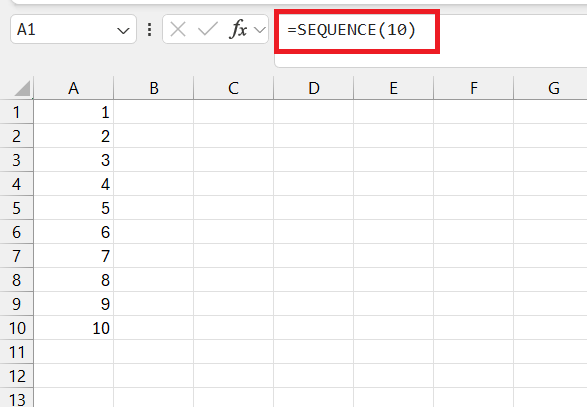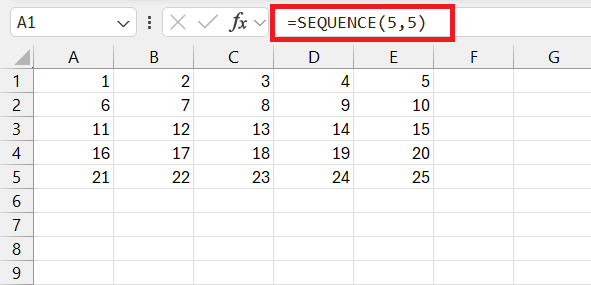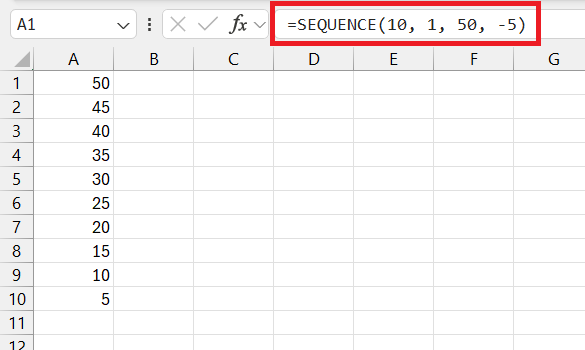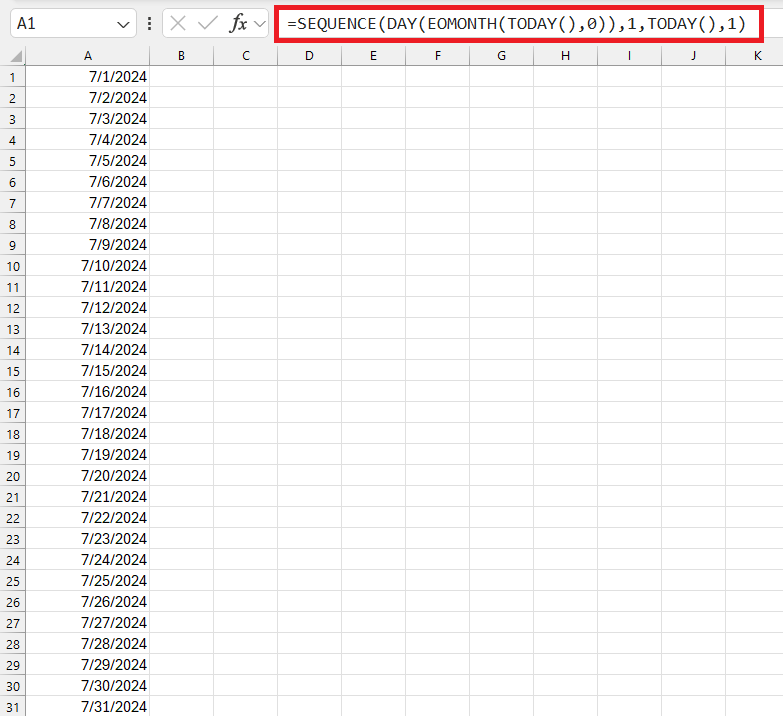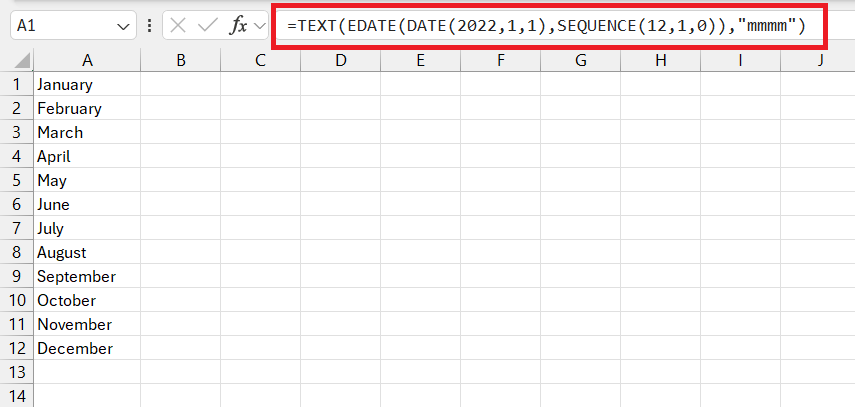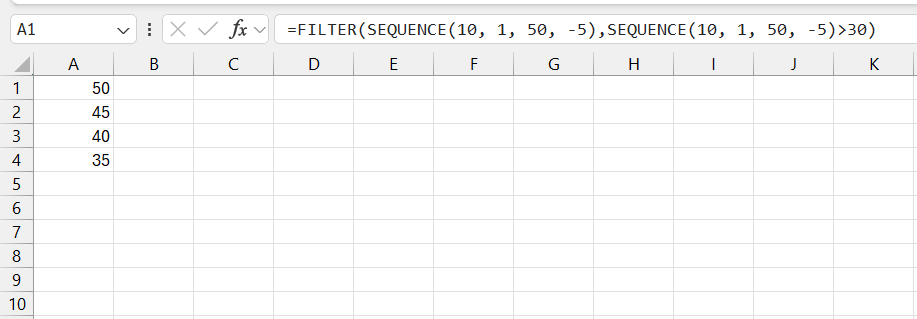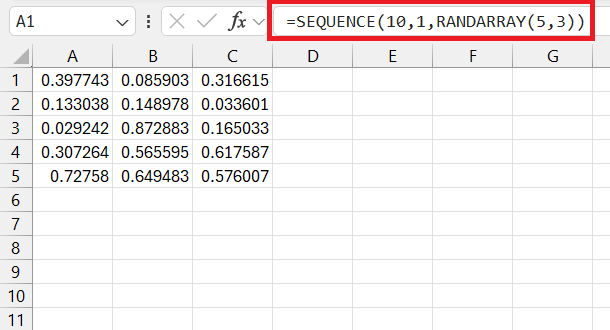The SEQUENCE function in Microsoft Excel is a powerful tool designed to generate a list of sequential numbers in a specified array format. It simplifies the process of creating dynamic and customizable number sequences for various applications. This function is particularly useful for tasks that require automated numbering, such as generating dates, creating indexes, or filling out ordered lists. In this article, we will explore the syntax, practical uses, and examples of the SEQUENCE function to enhance your Excel skills.
Key Takeaways:
- The SEQUENCE function in Excel generates a list of sequential numbers in an array format.
- It simplifies the creation of dynamic and customizable number sequences for various applications.
- SEQUENCE is useful for tasks requiring automated numbering, such as generating dates, creating indexes, or filling ordered lists.
- The function’s flexibility allows for specifying rows, columns, starting numbers, and step increments.
- SEQUENCE can be combined with other Excel functions like FILTER and RANDARRAY for advanced data analysis and customization.
Table of Contents
Introduction to the Power of SEQUENCE in Excel
Discovering the Basics of the SEQUENCE Function
Welcome to the fascinating world of Excel, where each function opens up a myriad of possibilities! At first glance, the SEQUENCE function might seem like a straightforward way to churn out numbers, but it’s much more than that. With it, you can fill a range with a sequential series of numbers, neatly side-stepping the tedious task of entering them manually.
Imagine you’re organizing a massive event and need to assign seats or perhaps you’re setting up an inventory system with item numbers. Instead of typing things out one by one, SEQUENCE is your go-to assistant. It’s perfect for when you need a quick list or even to lay the groundwork for more complex operations. The beauty of this gem lies in its simplicity and flexibility, making it an essential arrow in your Excel quiver.
The Blueprint: Syntax and Parameters of SEQUENCE
Unlocking the potential of the SEQUENCE function is easy once you get the hang of its syntax and parameters. It follows this blueprint:
=SEQUENCE(rows, [columns], [start], [step])
Let’s draw up the blueprint in detail:
- Rows: Specify the total number of rows you want to populate with sequential numbers.
- Columns (Optional): If you’re aiming for a wider array, define the number of columns here.
- Start (Optional): Choose the initial number of your sequence – this isn’t restricted to 1, so you can kick off any numerical sequence.
- Step (Optional): The pace at which your sequence progresses – perfect for custom increments.
Grasping each part of this blueprint allows you to construct a wide range of sequences. For instance, if your project calls for a countdown from 100 in twos over three columns, SEQUENCE can make that happen with just a sprinkle of these parameters.
Practical Examples of Number Sequences with SEQUENCE
To see the SEQUENCE function in action, let’s try out a few scenarios:
- Simple Linear Series: Creating a column with numbers 1 through 10? Just enter
=SEQUENCE(10)and watch as Excel elegantly lines up the numbers for you.
- Two-Dimensional Array: Need a 5×5 grid starting at 1? Punch in
=SEQUENCE(5,5)and you’ve got it.
- Custom Starting Point and Step: Say you want to start at 50 and count down by 5. Here’s how:
=SEQUENCE(10, 1, 50, -5)– it’s that flexible.
By tweaking the SEQUENCE formula, you can tailor your number sequences precisely to your project’s demands. It’s ideal whether you’re filling out a calendar, setting up invoice numbering, or any task that requires orderly numbering.
Beyond Basic Counting: Advanced Applications
Generating Date Sequences for Efficient Project Planning
Project planning in Excel becomes a breeze when you harness the power of the SEQUENCE function to generate date sequences. Combine it with the DATE function, and you can create a string of consecutive dates with the utmost ease. For example:
- Monthly Calendar: To create a vertical list of dates for the current month, you’d use:
=SEQUENCE(DAY(EOMONTH(TODAY(),0)),1,TODAY(),1), which calculates the number of days in the month and lists them from today’s date.
- Yearly Overview: Need to see every of the month for a year? Use
=TEXT(EDATE(DATE(2024,1,1),SEQUENCE(12,1,0),"mmmm")to get the names of the months (January, February, March, etc.) listed in order, without including any specific dates.
This is not just effective for tracking key dates; it’s your strategic companion in keeping an eye on the timeline of any project. Don’t let deadlines slip or events clash—let SEQUENCE keep everything in clear view.
Crafting Custom Sequences for Complex Data Analysis
When digging deep into data analysis, Excel’s SEQUENCE function stands out as an incredibly versatile tool for crafting custom sequences that match your specific needs. Let’s explore how you might use SEQUENCE in more intricate scenarios:
- Repeating Patterns: If your analysis requires a repeated set of values within a sequence, you could combine SEQUENCE with functions like MOD or CHOOSE to create alternating patterns—super handy for creating test data or categorizing entries.
- Data Simulation: Suppose you’re forecasting and need to simulate growth patterns. You could create an escalating series, like quarterly percentage increases, by using SEQUENCE in conjunction with mathematical operations to simulate potential future scenarios.
- Statistical Analysis: Maybe you’re performing statistical tests that require a series of distributions or intervals. SEQUENCE can generate these intervals systematically, cutting down on preliminary setup time and reducing the risk of input errors.
Using SEQUENCE this way not only speeds up the process of complex data analysis but also adds a layer of dynamism that’s challenging to achieve with static numbering. Your sequences can expand, contract, or adapt without you having to lift a finger to update every cell.
Best Practices When Utilizing SEQUENCE
Avoiding Common Pitfalls and Errors in SEQUENCE Formulas
Diving into SEQUENCE can sometimes lead to a few stumbles, but understanding common pitfalls can help you steer clear of errors. Here’s how to avoid some typical mistakes:
- Overcomplicating Formulas: Keep it simple. Utilize =SEQUENCE(10) for a straightforward sequence, then layer additional operations in nearby cells rather than nesting complicated formulas.
- Ignoring the Resulting Array Size: Make sure there’s enough space in your worksheet for the entire output of your SEQUENCE formula. Cramming a large sequence into a small space will result in errors.
- Misplacing Parameters: Stick to the script! Remember, the order of parameters is crucial: rows, columns, start, and step. Misplaced values can throw off your entire sequence.
- Overlooking Starting Point and Step Values: These optional parameters are powerful. If you ignore them, you might not fully leverage SEQUENCE’s capabilities to generate the precise sequence your project requires.
As you get the hang of SEQUENCE, these practices will become second nature, keeping your spreadsheets error-free and functioning seamlessly.
Tips for Maximizing Efficiency with SEQUENCE in Excel Spreadsheets
To turn your SEQUENCE command into a powerhouse of productivity in Excel, consider these savvy tips:
- Combine with Other Functions: Use SEQUENCE as the foundation and build upon it with functions like IF, SUM, or VLOOKUP to create even more dynamic and responsive data sets.
- Leverage Dynamic Arrays: Remember that SEQUENCE plays nicely with Excel’s dynamic arrays, allowing you to automatically spill results into neighboring cells, which can massively speed up calculations.
- Create Templates: Save sequences that you use frequently as part of a template. This allows you to reuse them without reinventing the wheel, saving you time and reducing the possibility of errors.
- Use Named Ranges: Give a meaningful name to your SEQUENCE formulas. This makes it easier to reference them in other parts of your spreadsheet or in future projects.
- Optimize for Large Data Sets: When working with massive data sets, minimize the use of volatile functions that can trigger a recalculation every time you make changes. Stick to efficient formulas that won’t slow down your workbook.
With these tips up your sleeve, you’ll find that SEQUENCE isn’t just a function—it’s a stepping stone towards more advanced, efficient, and error-free spreadsheets.
Additional Tools to Enhance SEQUENCE Functionality
Unveiling Complementary Functions: SORTBY, FILTER, and RANDARRAY
While SEQUENCE sets the stage for ordered data, its true potential is unlocked when paired with functions like FILTER, and RANDARRAY:
- FILTER: Let’s say you have a long list of events generated by SEQUENCE. FILTER can sift through these and only showcase those that meet certain criteria, such as upcoming deadlines or milestones.
- RANDARRAY: Combine SEQUENCE with RANDARRAY to add a pinch of unpredictability to your sequences, which is perfect for simulations, randomized selections, or stress-testing scenarios.
Mastering the interplay between these functions enhances their individual strengths, turning your spreadsheets into an orchestra of efficiency.
FAQ: Your SEQUENCE Function Questions Answered
Is there a sequence function in Excel?
Absolutely, there is! The SEQUENCE function is Excel‘s built-in tool that generates a list of numbers in an order, based on the criteria you set. It’s available in Excel for Microsoft 365 and Excel Online, among other newer versions, ready to help you automate your numbering with ease.
How do I do sequential numbering in Excel?
Sequential numbering in Excel is simple with the SEQUENCE function. Just type =SEQUENCE(n) into a cell, where n is the number of sequential numbers you want, and Excel will do the rest, instantly populating the cells with a consecutive series starting from 1.
How can I create a sequence of dates excluding weekends using SEQUENCE?
To create a sequence of dates while excluding weekends, you’ll need to combine SEQUENCE with the WORKDAY function. Use this formula: =WORKDAY.INTL(start_date, SEQUENCE(num_days)-1), where start_date is your starting date and num_days is the total number of workdays you want to list.
Is it possible to reverse a number sequence with the SEQUENCE function?
Yes, you can reverse a number sequence using the SEQUENCE function. Just set the ‘step’ parameter to a negative number. For instance, =SEQUENCE(10, 1, 10, -1) will give you a sequence that starts at 10 and counts down to 1.
Why don’t I have a sequence formula in Excel?
If you can’t find the SEQUENCE function in Excel, it’s likely because you’re using an older version of Excel that doesn’t support it. SEQUENCE is available in Excel for Microsoft 365 and Excel Online. For older versions, you’ll need to use alternative methods for creating sequences, like dragging the fill handle or writing manual formulas.
John Michaloudis is a former accountant and finance analyst at General Electric, a Microsoft MVP since 2020, an Amazon #1 bestselling author of 4 Microsoft Excel books and teacher of Microsoft Excel & Office over at his flagship MyExcelOnline Academy Online Course.

